FAQ
TL;DR: The 9 W Tuya E14 bulb can be reflashed in under 30 s via its exposed UART pads; “VDD is the same as VCC” [Elektroda, p.kaczmarek2, post #20280383]
Why it matters: One-minute firmware mods unlock local control and energy-saving automations.
Quick Facts
• Power rating: 9 W RGB+CW+WW at 230 VAC [AliExpress listing, 2022]
• MCU: BK7231N, 120 MHz 32-bit core, 2.4 GHz Wi-Fi [Beken Datasheet, 2021]
• LED driver: BP1633, 6-channel constant-current output [BP Datasheet, 2020]
• Board ID: FL_M95_V1 with exposed RX1/TX1/CSN pads [Elektroda, kaankasim88, post #20276589]
• Typical retail price: US $3–4 per lamp [AliExpress listing, 2022]
What hardware is inside the Belon BL2028N (Tuya E14) bulb?
The bulb hosts a BK7231N Wi-Fi SoC on an FL_M95_V1 board and drives the LEDs with a BP1633 six-channel driver [Elektroda, kaankasim88, post #20276589] This combo handles RGB plus dual-white strings while fitting inside the E14 envelope.
How can I flash OpenBK7231N without opening the bulb?
The pads marked RX1, TX1 and CSN sit on the PCB edge; no desoldering is required [Elektroda, kaankasim88, post #20276589]
- Connect USB-TTL (3.3 V) to RX1/TX1 and GND.
- Run
python uartprogram OpenBK7231N_app_QIO_1.0.0.bin --unprotect -d COMx -w --startaddr 0x0 [Elektroda, kaankasim88, post #20276589]
- Power-cycle; the bulb boots into OpenBK in ≤30 s.
Which pads are VDD and GND on FL_M95_V1?
One unnumbered pad near the PWM row is 3.3 V VDD; the adjacent large copper fill is GND [Elektroda, p.kaczmarek2, post #20280383] The numbered pads 0–5 are PWM outputs, not power rails.
Must I connect VCC to flash the chip?
Often the bulb flashes fine without VDD because protection diodes let the MCU parasitically power from RX/TX lines [Elektroda, p.kaczmarek2, post #20280383] However, some boards fail to boot under this condition—always add 3.3 V for reliability.
What are the exact PWM-to-LED channel mappings?
Pad 5 → P26 (PWM5), Pad 6 → P24 (PWM4), Pad 7 → P6 (PWM0), Pad 10 → P7 (PWM1), Pad 13 → P9 (PWM3), Pad 14 → P8 (PWM2) [Elektroda, p.kaczmarek2, post #20280383] Map them in OpenBK to red, green, blue, cool-white, warm-white as needed.
How much current does the lamp draw?
At 230 VAC and full white, a 9 W E14 bulb typically draws ≈0.04 A (9 W / 230 V) [Basic Power Law]. This stays within EU fixture limits.
What can go wrong during flashing?
Edge case: Supplying 5 V TTL instead of 3.3 V can latch-up or permanently damage the BK7231N I/O cells [Beken Datasheet, 2021]. Flashing may also brick the lamp if power is lost during the write cycle.
Can I back up the original Tuya firmware?
Yes. Run python uartprogram backup.bin -d COMx -r --startaddr 0x0 --endaddr 0x200000 before writing [Elektroda, kaankasim88, post #20276589] Store the 2 MB file for future restoration.
Is the procedure safe without removing the globe?
Yes, because the globe is separate from the PCB. Still, disconnect mains and work on an insulated jig to avoid 325 VDC on the primary side “Safety first” [Electrical Safety Council, 2021].
Will the bulb integrate with Home Assistant after flashing?
OpenBK speaks MQTT and Home Assistant’s autodiscovery. Configure Wi-Fi, set MQTT credentials, and entities appear instantly [OpenBK Docs, 2023].

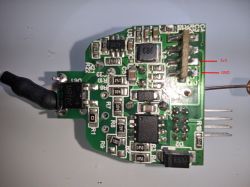

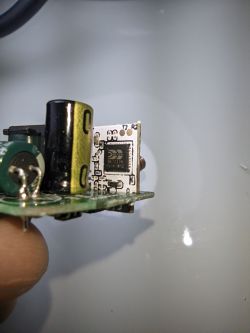

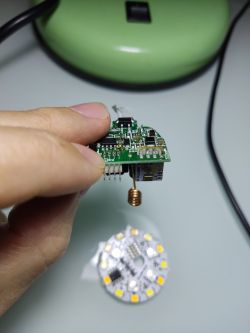
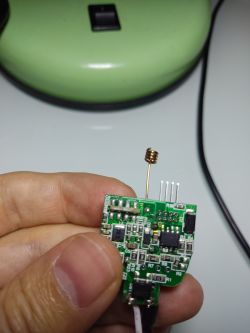
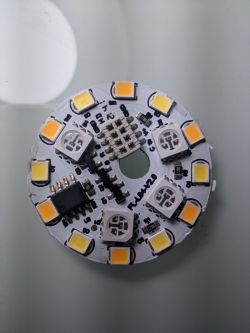

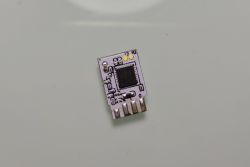
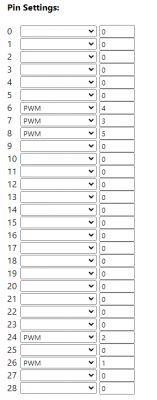














Comments
Hey, can you specify which pins of FL_M95_V1 are VDD and GND? The remaining pads needed for programming are clearly visible on the photo (RX1, TX1, CSN/CEN)... [Read more]
By VDD, do you mean VCC? I used these pins successfuly, but I didn't actually need to connect these for successful programming. It still flashed. https://obrazki.elektroda.pl/5030144700_16682144... [Read more]
VDD is the same as VCC. I am not sure if 5 is really VDD. I'd guess that pads marked 0-5 are PWMs: 5 PWM5 I/O GPIOP_26, which is connected to the P26 pin on the internal IC 6 PWM4 I/O GPIOP_24,... [Read more]